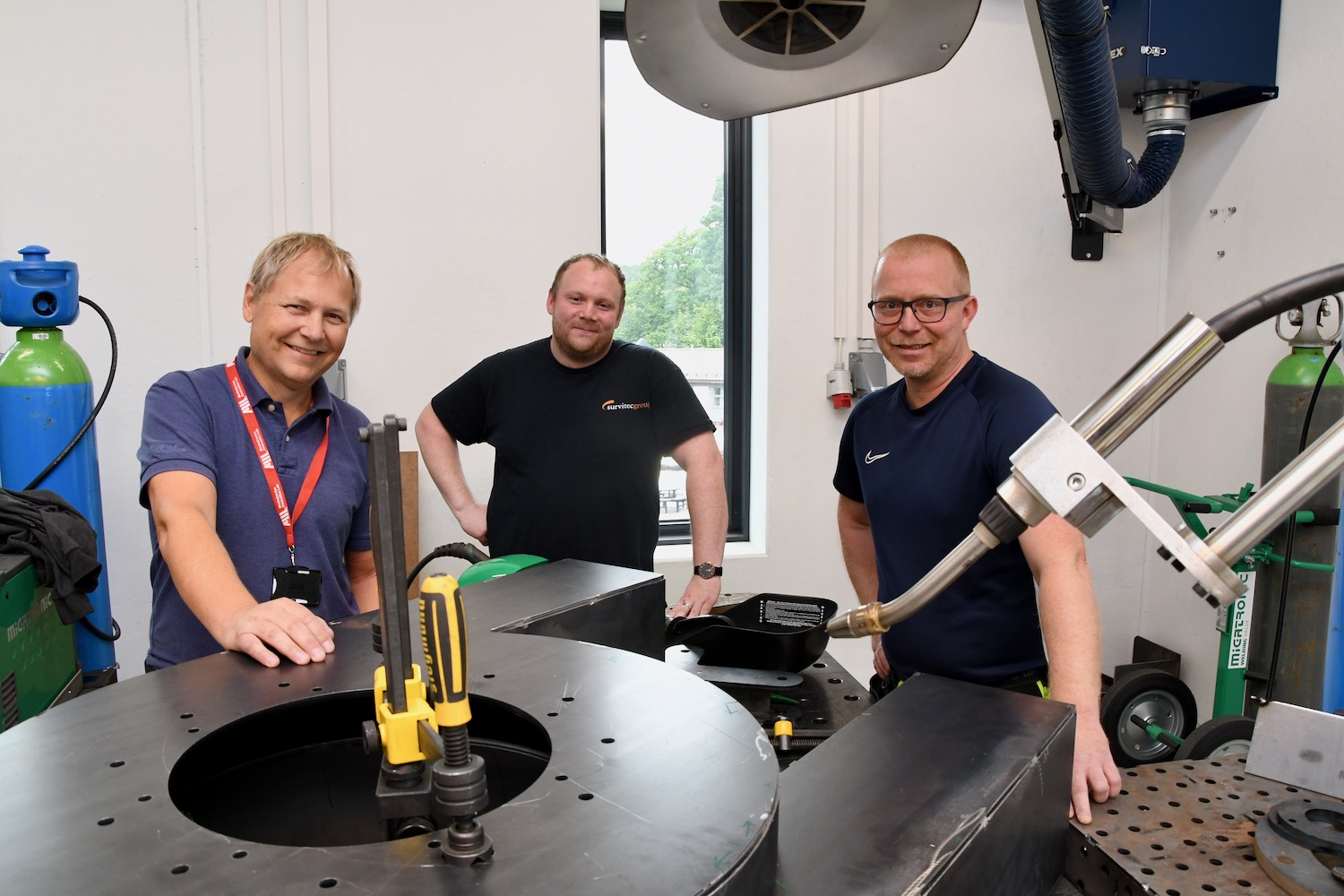“For the last 15 years, all our welding processes has been outsourced to Estonia and China, due to the lower labor costs. But as robots become increasingly cheaper and easier to program and re-program, we might be at a point in time where it is more cost-effective to bring welding processes back home to Norway,” says Kenneth Hagen, Project Manager at Maritime Protection, part of Survitec Group.
He led a team that spent almost a week at Mechatronics Innovation Lab, MIL, in Grimstad to understand how modern welding robots work, and how they may be implemented in the production of Maritime Protection’s inert gas generator systems.
“What are the possibilities and limitations, what is the cost, and how much time does it take to program the robot to perform certain tasks. Those are the kinds of questions we would like to find answers to,” says Hagen.
He was encouraged by the findings at MIL.
“Home-sourcing of production would enable us to better control the welding process. At times, and especially at times like these when we are not able to travel to supervise the process, we believe it may be more efficient to do the welding at home. If automated, it would ensure that we get a perfect result every time,” says Hagen.
Already during the first day at MIL, the Maritime Protection team was able to handle the robot by themselves.
“It has an intuitive interface which makes it quite simple to operate. When correctly programmed it will perform the same routine flawlessly time after time, thus outperforming any human in what is simple and – quite frankly – boring work processes,” says Hagen.
If implemented in the Maritime Production facilities in Kristiansand, a welding robot would primarily be involved in the production of spare parts.
“However, in time and with experience, we would like to also produce some of the more advanced parts in Norway,” says Hagen.
The Maritime Protection team will be back at Mechatronics Innovation Lab for further testing in months to come.



